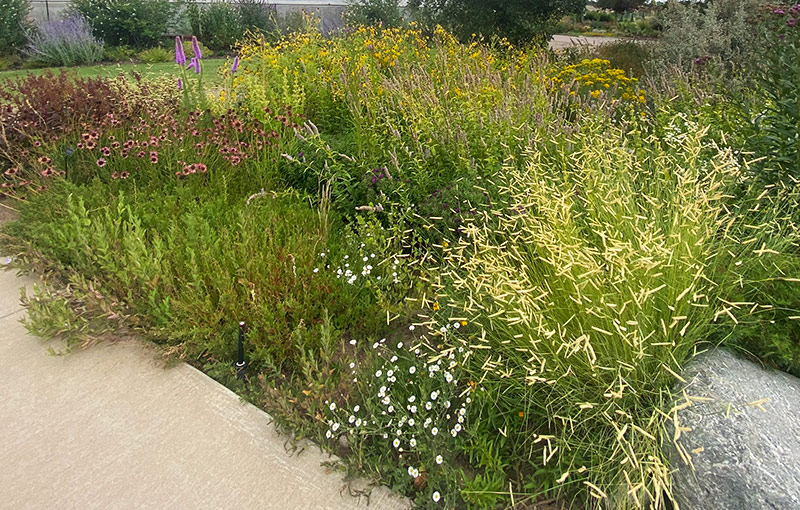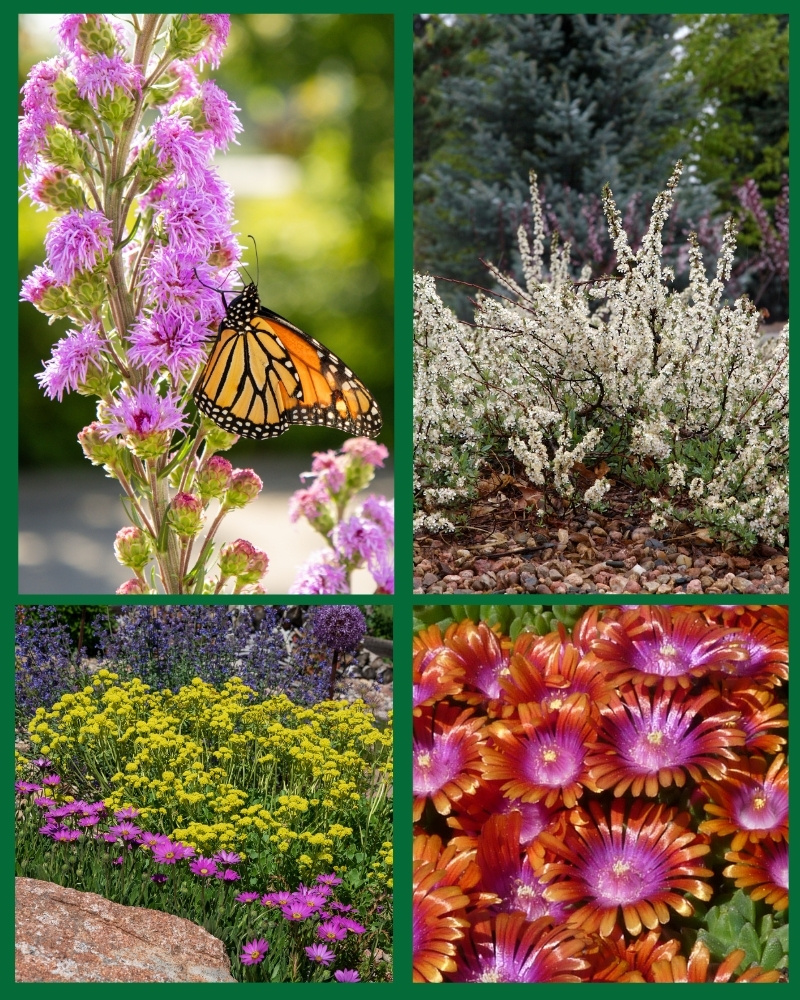Can You Lower Your Water Bill With Drought-Tolerant Plants? (And How Much?)

These are interesting questions to explore—whether you’re an HOA or an individual homeowner.
Consider this…
Water prices likely will go up.
Why?
For one thing, more people are moving to the West.
According to US News & World Report, the states of Utah, Idaho, Texas, North Dakota, Nevada, Colorado and Washington saw the biggest growth in residents over the last decade (2010 to 2020)—from 18% population growth in Utah, to 15% growth in Washington.
Our population is growing. Unfortunately, our water supply is not.
Western drought conditions are worsening. As of January 2022, the areas of the western U.S. that were in drought rose from 77% to 88% (compared to January 2021).
With growing demands for water and limited supply, it’s safe to assume that water prices will increase.
So, what can you do to plan ahead?
Follow your water use.
In Colorado cities, it’s estimated that up to half of water use is for outdoor purposes. (Aurora, Colorado offers a good example.)
In speaking with HOAs, we often hear that 40-50% of their water usage is for outdoor use.
Much of that water goes toward irrigating traditional lawns, like Kentucky bluegrass. These lawns need measurable moisture. The Colorado State University (CSU) Extension says these grasses may need up to 2.25 inches of irrigation per week during the height of the summer to remain healthy and high quality.
And we aren’t even talking about the labor and product costs to maintain traditional lawns—like mowing, fertilizing and other treatments.

If you have a traditional lawn…
One option to reduce your costs is to replace portions of your traditional lawn with low-water groundcovers, perennials and shrubs.
These plants offer many benefits, from multi-season interest, to pollinator and wildlife habitats, to cooling effects and carbon sequestering.
A CSU study has shown that shrubs have the potential to tolerate drought better than traditional lawns, keeping a nicer appearance and demonstrating resilience.
And yes, drought-tolerant plants can offer long-term financial savings too.
Several HOAs that have converted their portions of their landscapes from turf to plants have shared their savings.
Cherry Creek 3—an HOA community in Denver—was able to reduce its water and sewage bill from 42% of its annual costs to roughly 30% of its annual costs. How? They focused on converting much of their turf to low-water plants, and they changed from 1960s-era toilets to low-flush toilets.
Fairway Ridge HOA community in Colorado also converted areas of turf to low-water landscape plants.
Historically, their HOA community paid $.26/square foot to maintain their turf and $.14/square foot to maintain their landscape.
Using grants and volunteer labor, Fairway Ridge estimated they were able to convert their turf to plants for just $2.30/square foot in 2019. They projected they’d recoup their investment and start to save money in just over 5 years with awarded grants. (Here’s how Fairway Ridge made their estimates and projections.)
Ways to save money during the turf conversion process:
Yes, there are upfront costs to changing from turf to plants. But there also are ways to save during this process.
For example:
- Many municipalities, water utilities and non-profits offer incentives to convert turf lawns into low-water plants. Here are examples: Flip Your Strip in Utah for individual homeowners, the Fort Collins Xeriscape Incentive Program for HOAs and commercial properties, the Fort Collins Xeriscape Incentive Program for individual homeowners, and the Turf Exchange Rebate Program in Sacramento, California.
- There are grants available for HOAs. For an example, see the grant program from Northern Water in Colorado.
- HOAs have invited their community members to volunteer with the planting process, minimizing labor costs and lowering the overall cost of the conversion.
To qualify for many of these types of programs, plants often must make up at least 50% of the converted landscape. (Turning lawns into rocks won’t cut it!)
Interested in learning more?
If you’re considering transitioning from turf to plants, you can find the annual commercial maintenance needs for each of our plants online, so you can choose plants well:
- Go to Our Plants.
- Click on the green button on the upper right: “Export Plants to Excel.”
- Scroll to the far right column in the spreadsheet to see each plant’s annual maintenance needs.
And if you’re an HOA with questions about turf conversions, please feel free to reach out to Ross Shrigley of Plant Select at (970) 481-3429. He’d be happy to speak with you.


